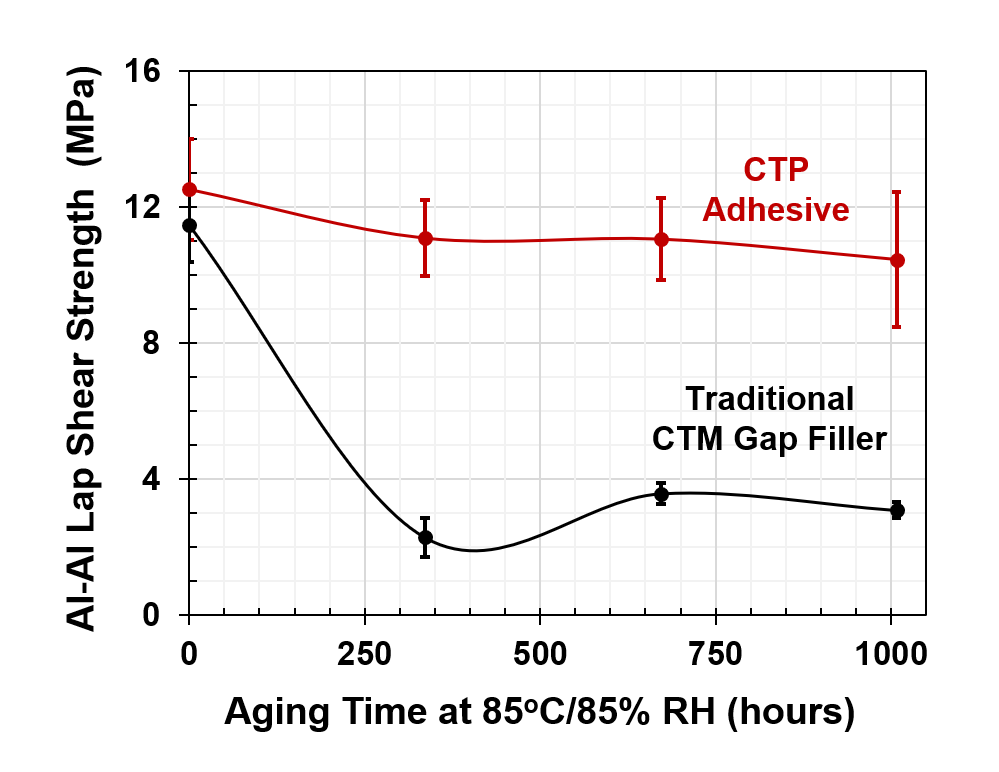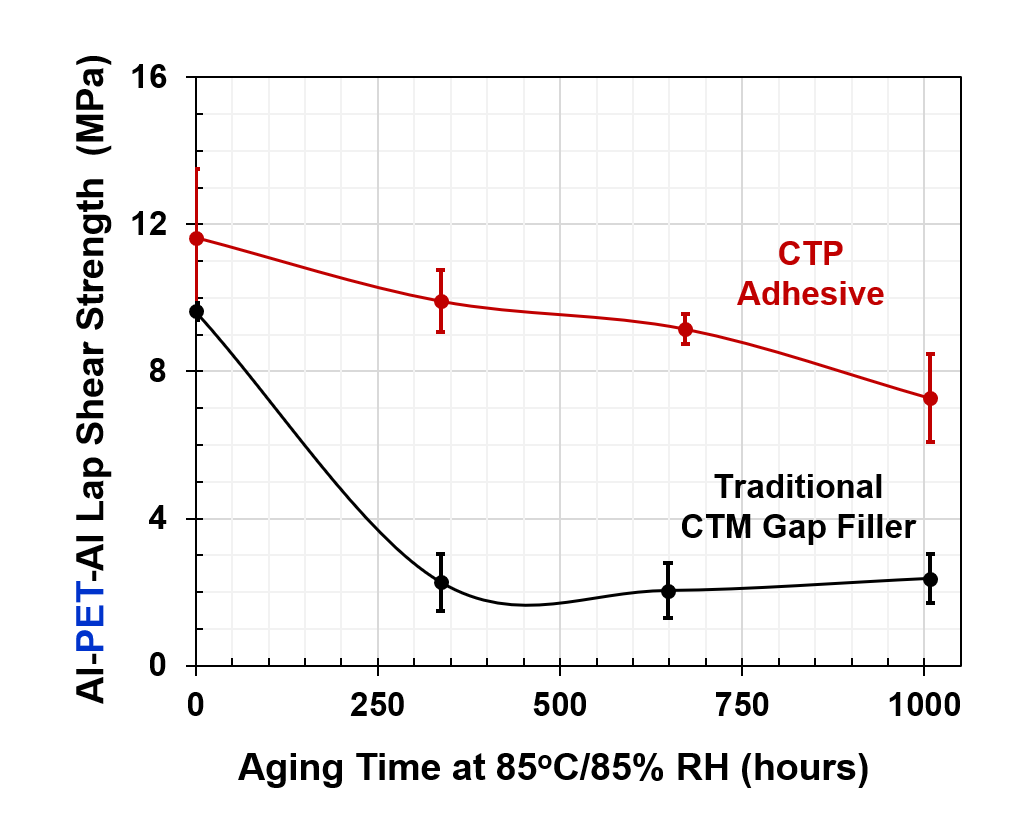As shared in part one of this two-part series, the significant growth and development of battery pack technologies have led to manufacturers of Electric Vehicles (EVs) placing an increased emphasis on pack design optimization. These manufacturers are looking at both immediate and long-term solutions, including bonding individual cells directly to the cooling plate and even bonding directly to the vehicle chassis. For these solutions to be viable, new thermally conductive (TC) adhesive technology is needed.
In part one, we highlighted the new developments in TC urethane adhesives as explained in a white paper. In addition, current battery pack configurations were reviewed, the next generation Cell-to-Pack (CTP) configuration, and the formulation, developing, and testing processes. This final part in the series will provide the test results, insights, and what it all means for battery and EV manufacturers.
Results and insights
New CTP designs require adhesives to maintain excellent adhesion under more stringent environmental testing conditions—due to the lack of protective modular housing. Historically, urethane adhesives often had difficulty maintaining very high levels of adhesion, particularly on plastics and aluminum substrates. Adhesives containing elevated levels of TC filler pose an even greater challenge.
To address these challenges, our partners at Parker formulated two types of two-part TC urethanes based on traditional chemistries designed for CTM applications and new chemistries for CTPAging Time applications. Through the development of these unique formulations, Parker achieved noteworthy results after extended environmental aging. During testing using lap shear strength (LSS), the traditional CTM gap filler experienced a significant drop (80 percent) in LSS after only two weeks of aging.
Although the drop still led to substantial lab shear values in the 2-4 MPa range, these numbers are not suited for new CTP battery designs. The loss in adhesion is primarily attributed to the loss of interfacial adhesion. Under the same testing process, the new CTP adhesive demonstrated high levels of adhesion throughout the entire aging test.
Additional experiments were conducted on hybrid substrates to mimic bonding patterns between a polyethylene terephthalate-wrapped battery cell and the underlying aluminum cooling plate. As seen in the previous tests, the LSS of the traditional CTM gap filler rapidly declined, and full adhesive failure occurred. While the CTM gap filler did not maintain adequate strength to aluminum when exposed to high heat and humidity, the CTP adhesive on the hybrid substrates continued to retain robust adhesion and saw only a slight drop in LSS.
In addition to the adhesive performance, critical bulk properties were also characterized for the CTP adhesive, including resin and hardener viscosity, mixed specific gravity, thermal conductivity, ultimate tensile strength, and elongation at break.
In summary, Parker's new CTP adhesives are capable of delivering the balance of rheology needed for ease of manufacturing, the low density for vehicle light-weighting, good thermal conductivity (for effective battery heat management), strong bulk properties to assist in handling mechanical loads, and low dielectric constant to prevent electrical charge build-up.
Key takeaways
For battery and EV manufacturers focused on pack design optimization, the findings provided in the white paper confirm the viability of Parker's new CTP adhesives as near-term solutions. These innovative technologies deliver substantial thermal conductivity while also maintaining high levels of adhesion—even after six weeks of aging!
Coupling the strong adhesion and substantial thermal conductivity of the CTP adhesives with their low density, flow characteristics, and low dielectric constant is key to enabling battery and EV manufacturers to achieve higher pack energy densities and the reduced manufacturing costs that new CTP battery designs offer. And, to ensure customers’ varied application requirements are met, adhesive performance can be tailored specifically to each customer’s needs.
To read more about the next generation cell-to-pack configurations, please review the white paper.
This article was written by Dr. Tim Fornes, principal scientist with the Chemical Reserach Department of Parker.
Gallagher Fluid Seals is an authorized distributor of Parker.
For more information about battery applications, contact Gallagher Fluid Seals today.


